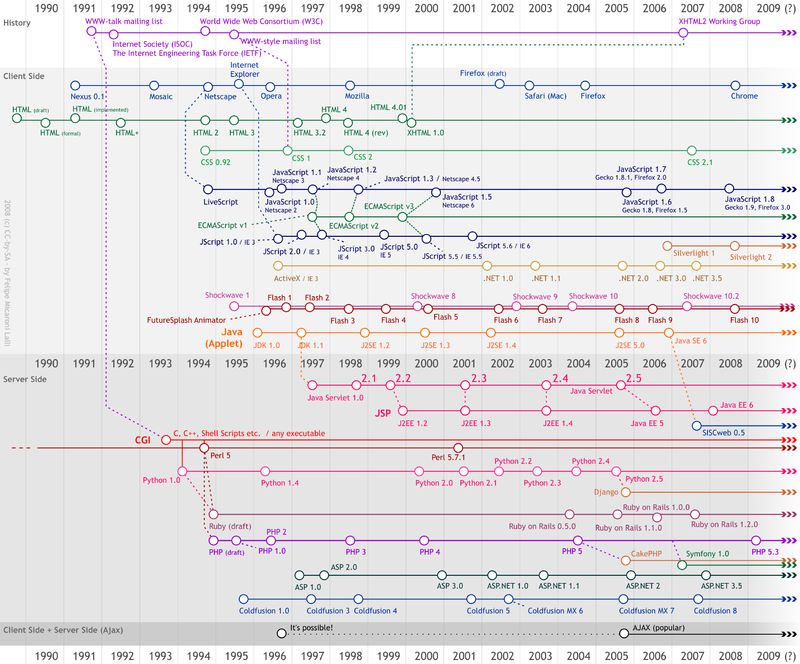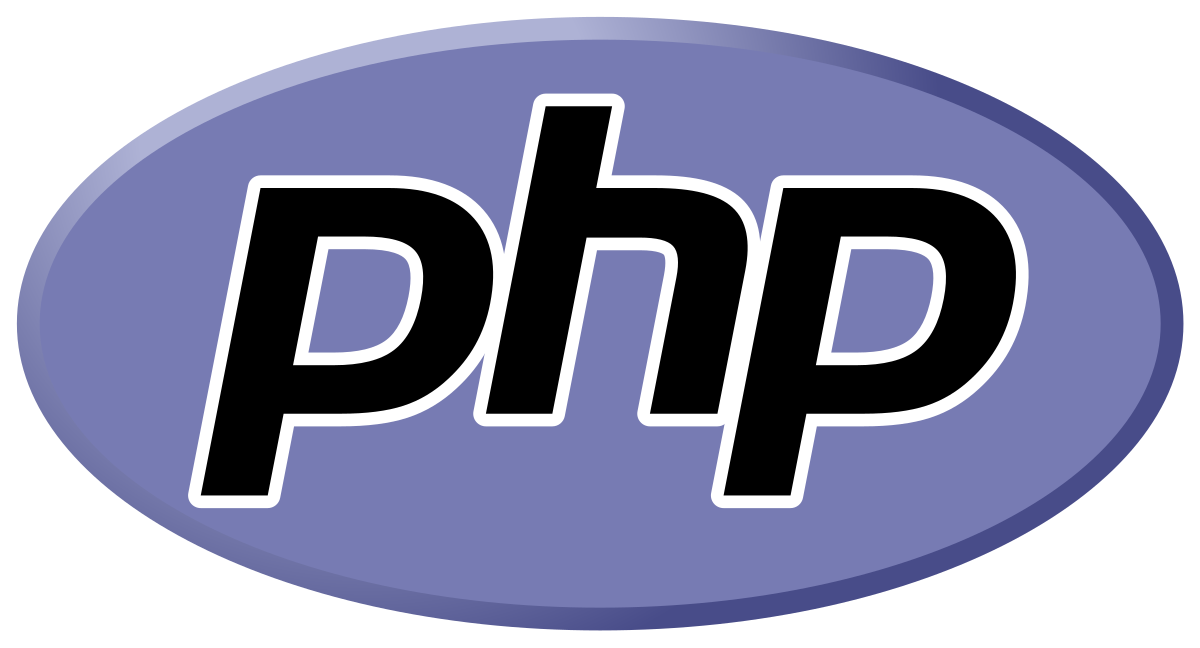Web application development using PHP
COURTESY :- vrindawan.in
Wikipedia
A web application (or web app) is application software that runs in a web browser, unlike software programs that run locally and natively on the operating system (OS) of the device. Web applications are delivered on the World Wide Web to users with an active network connection.
In earlier computing models like client-server, the processing load for the application was shared between code on the server and code installed on each client locally. In other words, an application had its own pre-compiled client program which served as its user interface and had to be separately installed on each user’s personal computer. An upgrade to the server-side code of the application would typically also require an upgrade to the client-side code installed on each user workstation, adding to the support cost and decreasing productivity. In addition, both the client and server components of the application were usually tightly bound to a particular computer architecture and operating system and porting them to others was often prohibitively expensive for all but the largest applications (Nowadays, native apps for mobile devices are also hobbled by some or all of the foregoing issues).

In 1995, Netscape introduced a client-side scripting language called JavaScript allowing programmers to add some dynamic elements to the user interface that ran on the client side. So instead of sending data to the server in order to generate an entire web page, the embedded scripts of the downloaded page can perform various tasks such as input validation or showing/hiding parts of the page.
In 1999, the “web application” concept was introduced in the Java language in the Servlet Specification version 2.2. [2.1?]. At that time both JavaScript and XML had already been developed, but Ajax had still not yet been coined and the XML Http Request object had only been recently introduced on Internet Explorer 5 as an ActiveX object.
In 2005, the term Ajax was coined, and applications like Gmail started to make their client sides more and more interactive. A web page script is able to contact the server for storing/retrieving data without downloading an entire web page.
Applications are usually broken into logical chunks called “tiers”, where every tier is assigned a role.Traditional applications consist only of 1 tier, which resides on the client machine, but web applications lend themselves to an n-tiered approach by nature. Though many variations are possible, the most common structure is the three-tiered application. In its most common form, the three tiers are called presentation, application and storage, in this order. A web browser is the first tier (presentation), an engine using some dynamic Web content technology (such as ASP, CGI, ColdFusion, Dart, JSP/Java, Node.js, PHP, Python or Ruby on Rails) is the middle tier (application logic), and a database is the third tier (storage). The web browser sends requests to the middle tier, which services them by making queries and updates against the database and generates a user interface.
For more complex applications, a 3-tier solution may fall short, and it may be beneficial to use an n-tiered approach, where the greatest benefit is breaking the business logic, which resides on the application tier, into a more fine-grained model. Another benefit may be adding an integration tier that separates the data tier from the rest of tiers by providing an easy-to-use interface to access the data. For example, the client data would be accessed by calling a “list_clients()” function instead of making an SQL query directly against the client table on the database. This allows the underlying database to be replaced without making any change to the other tiers.
There are some who view a web application as a two-tier architecture. This can be a “smart” client that performs all the work and queries a “dumb” server, or a “dumb” client that relies on a “smart” server. The client would handle the presentation tier, the server would have the database (storage tier), and the business logic (application tier) would be on one of them or on both. While this increases the scalability of the applications and separates the display and the database, it still doesn’t allow for true specialization of layers, so most applications will outgrow this model.
Security breaches on these kinds of applications are a major concern because it can involve both enterprise information and private customer data. Protecting these assets is an important part of any web application and there are some key operational areas that must be included in the development process. This includes processes for authentication, authorization, asset handling, input, and logging and auditing. Building security into the applications from the beginning can be more effective and less disruptive in the long run.
Writing web applications is often simplified with the use of web application frameworks. These frameworks facilitate rapid application development by allowing a development team to focus on the parts of their application which are unique to their goals without having to resolve common development issues such as user management. Many of the frameworks in use are open-source software.
The use of web application frameworks can often reduce the number of errors in a program, both by making the code simpler, and by allowing one team to concentrate on the framework while another focuses on a specified use case. In applications which are exposed to constant hacking attempts on the Internet, security-related problems can be caused by errors in the program. Frameworks can also promote the use of best practices such as GET after POST.
In addition, there is potential for the development of applications on Internet operating systems, although currently there are not many viable platforms that fit this model.
A web developer is a programmer who develops World Wide Web applications using a client–server model. The applications typically use HTML, CSS and JavaScript in the client, PHP, ASP.NET (C#), Python, Node.js, Go or Java in the server, and http for communications between client and server. A web developer may specialize in client-side applications (front-end developer), server-side applications (back-end developer), or both (full-stack developer).

There are no formal educational or license requirements to become a web developer. However, many colleges and trade schools offer coursework in web development. There are also many tutorials and articles which teach web development, often freely available on the web – for example, on JavaScript.
PHP is a general-purpose scripting language geared toward web development. It was originally created by Danish-Canadian programmer Rasmus Lerdorf in 1993. The PHP reference implementation is now produced by The PHP Group. PHP originally stood for Personal Home Page, but it now stands for the recursive initialism PHP: Hypertext Preprocessor.

PHP code is usually processed on a web server by a PHP interpreter implemented as a module, a daemon or as a Common Gateway Interface (CGI) executable. On a web server, the result of the interpreted and executed PHP code – which may be any type of data, such as generated HTML or binary image data – would form the whole or part of an HTTP response. Various web template systems, web content management systems, and web frameworks exist which can be employed to orchestrate or facilitate the generation of that response. Additionally, PHP can be used for many programming tasks outside the web context, such as standalone graphical applications and robotic drone control. PHP code can also be directly executed from the command line.
The standard PHP interpreter, powered by the Zend Engine, is free software released under the PHP License. PHP has been widely ported and can be deployed on most web servers on a variety of operating systems and platforms.
The PHP language evolved without a written formal specification or standard until 2014, with the original implementation acting as the de facto standard which other implementations aimed to follow. Since 2014, work has gone on to create a formal PHP specification.
W3Techs reports that, as of October 2022, “PHP is used by 74.4% of all the websites whose server-side programming language we know.” PHP version 7.4 is the most used version. Support for version 7.3 was dropped on 6 December 2021.
PHP development began in 1993 when Rasmus Lerdorf wrote several Common Gateway Interface (CGI) programs in C, which he used to maintain his personal homepage. He extended them to work with web forms and to communicate with databases, and called this implementation “Personal Home Page/Forms Interpreter” or PHP/FI.
PHP/FI could be used to build simple, dynamic web applications. To accelerate bug reporting and improve the code, Lerdorf initially announced the release of PHP/FI as “Personal Home Page Tools (PHP Tools) version 1.0” on the Usenet discussion group comp. infosystems. www.authoring.cgi on June 8, 1995. This release already had the basic functionality that PHP has today. This included Perl-like variables, form handling, and the ability to embed HTML. The syntax resembled that of Perl, but was simpler, more limited and less consistent.
